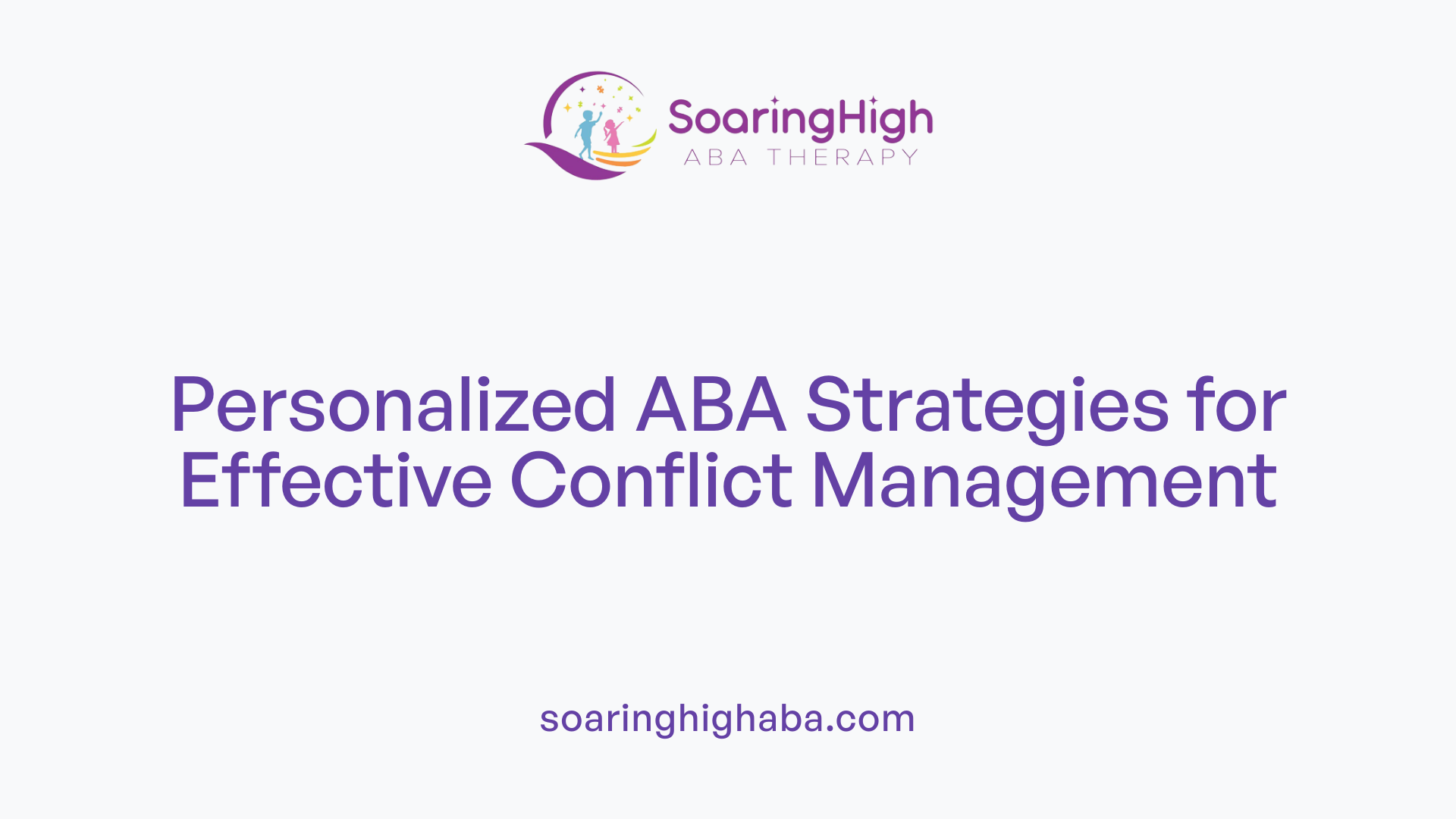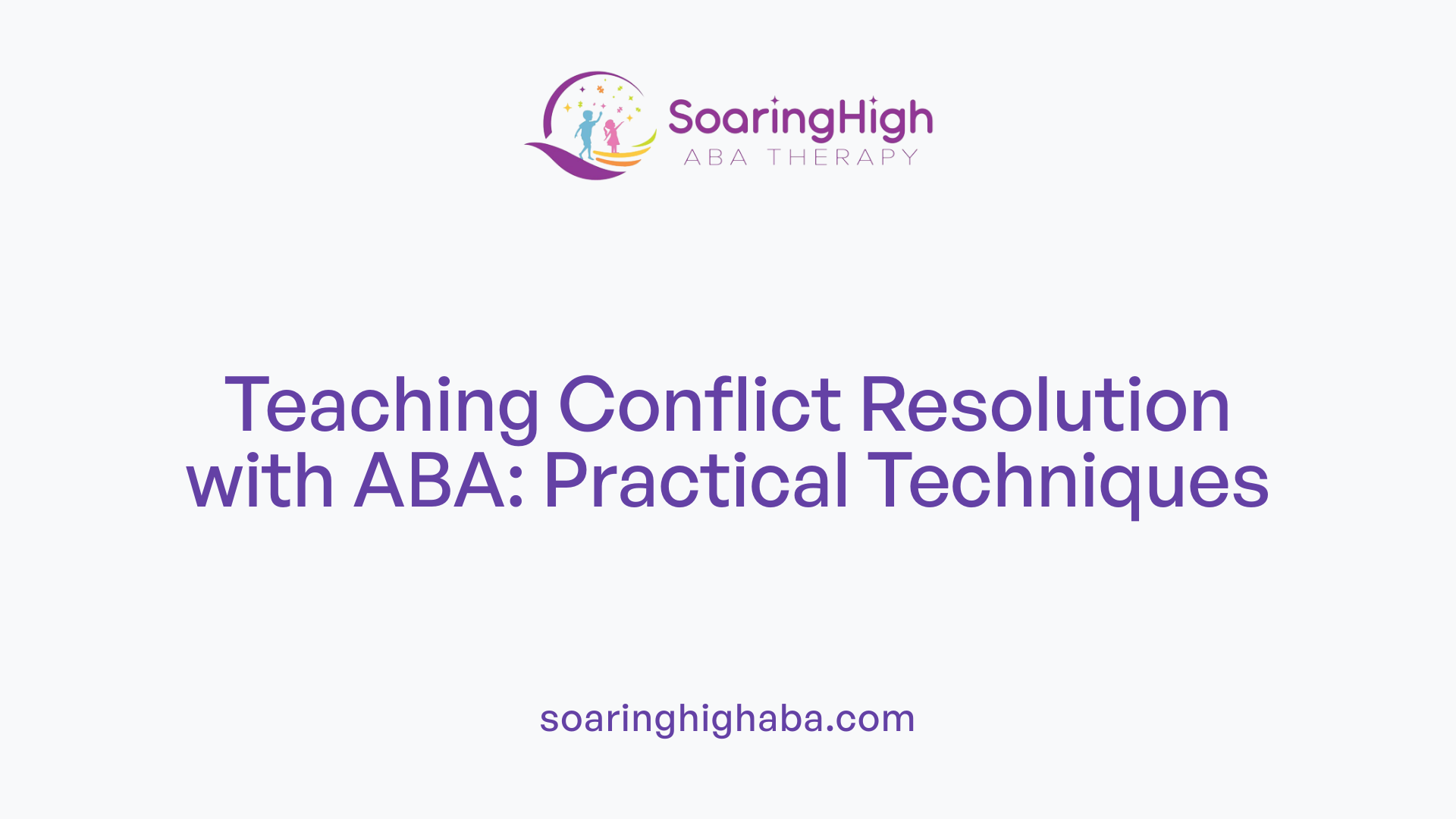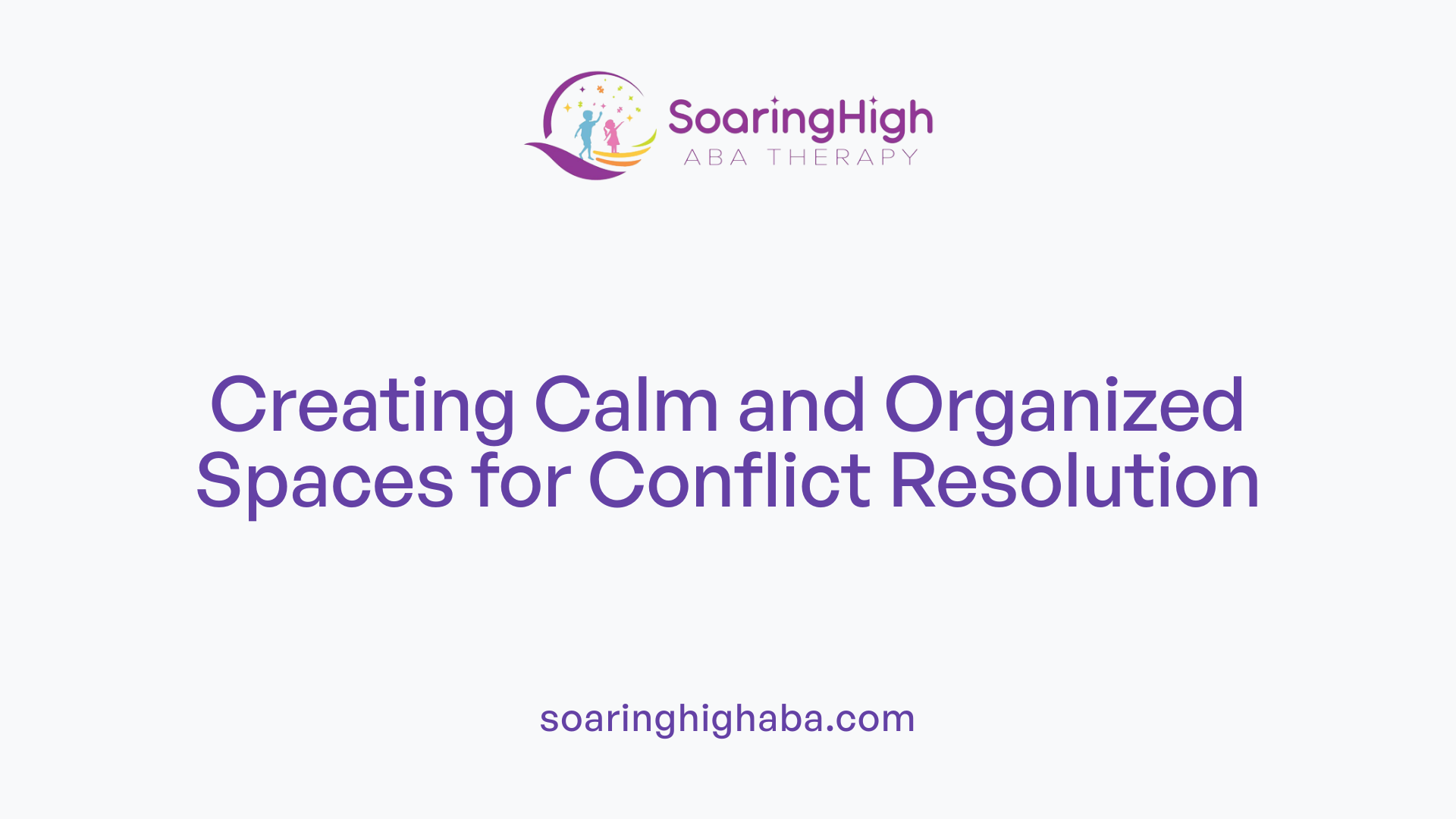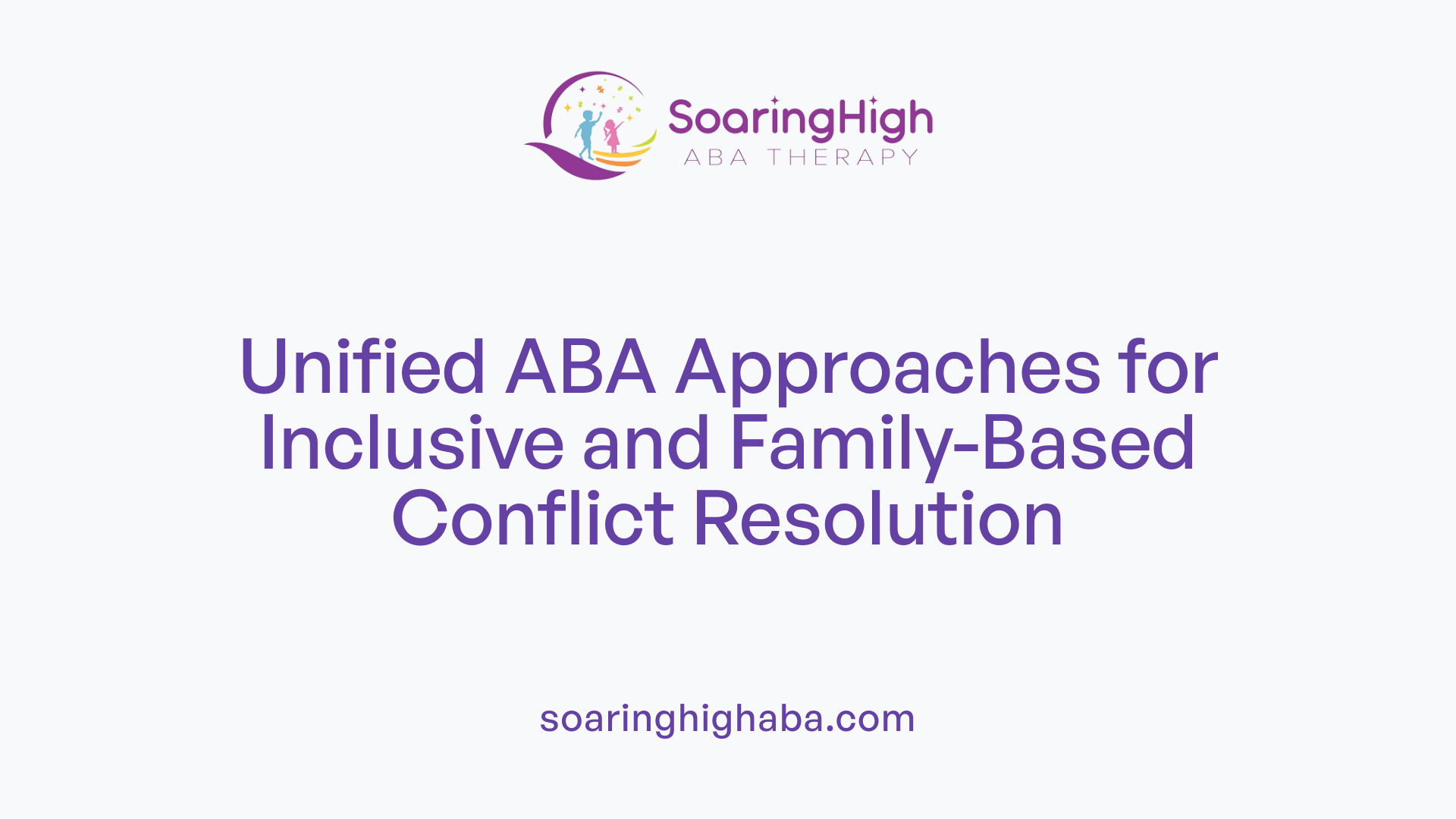Unlocking Conflict Resolution Through Behavioral Science
Conflict is an inevitable part of human interaction, yet effective management of disputes requires specific skills that can be systematically taught. Using Applied Behavior Analysis (ABA), educators, therapists, and caregivers can develop targeted interventions that foster social competence and emotional regulation. This approach, rooted in robust scientific principles, offers a structured pathway to building conflict management abilities, particularly in children with developmental challenges such as autism spectrum disorder (ASD). The following sections explore how ABA-based interventions are implemented, the theoretical foundations supporting their use, and the numerous benefits they confer in educational and therapeutic contexts.
Implementing ABA to Develop Conflict Management Skills

How can assessments like the DiSC profile inform conflict management interventions?
Using personality assessments such as the DiSC profile provides valuable insight into individual differences that influence conflict behaviors. The DiSC model categorizes personality traits into four styles: Dominance, Influence, Steadiness, and Conscientiousness. Understanding these can help tailor ABA strategies to better suit each person's natural tendencies.
For example, individuals with a Dominance style may prefer direct, goal-oriented approaches, while those with a Steadiness style might respond best to collaborative and soothing interventions. Incorporating this understanding into the intervention plan ensures strategies resonate effectively, making conflict resolution more achievable.
By assessing personality influences, practitioners can design more personalized and engaging programs, increasing the likelihood of success in teaching conflict management skills.
Applying ABA Principles in Educational and Therapeutic Settings

How can ABA principles be applied to teach conflict resolution in educational or therapeutic contexts?
Applied Behavior Analysis (ABA) offers effective strategies for teaching conflict resolution by carefully understanding and modifying behavior. First, practitioners assess the specific behavioral needs of each student, identifying triggers and problematic behaviors.
Once needs are understood, individual interventions are designed that teach essential skills such as effective communication, empathy, negotiation, and emotional regulation. These skills are crucial for resolving conflicts and maintaining positive interactions.
To instill these skills, educators utilize modeling, where they demonstrate appropriate behaviors; role-playing, which allows students to practice conflict scenarios in a safe setting; and reinforcement, rewarding positive behaviors to encourage their recurrence.
Social stories and visual supports enhance understanding by illustrating conflict resolution steps clearly, helping students internalize strategies. Structured activities and consistent routines support the generalization of these skills across different settings and real-life situations.
ABA emphasizes behavior analysis and reinforcement techniques. For example, when a student successfully uses calm communication to resolve an issue, they receive praise or preferred activities as reinforcement.
Creating a positive, supportive environment is foundational. Collaborating with families and therapists ensures consistency and reinforces skills across home, school, and community.
Training educators in ABA principles enables inclusive classrooms where students develop conflict resolution abilities alongside other social skills. Classroom management strategies also promote a culture of respect and understanding, vital for emotional safety.
Strategies for Teaching Conflict Resolution in Schools and Clinics
| Technique | Description | Purpose |
|---|---|---|
| Modeling | Demonstrating appropriate behaviors during conflict scenarios | Builds understanding and imitation |
| Role-playing | Simulating conflicts for students to practice responses | Enhances real-world application |
| Reinforcement | Rewarding positive conflict resolution behaviors | Increases likelihood of repetition |
| Social stories | Using stories to illustrate conflict resolution steps | Clarifies expectations and procedures |
| Visual supports | Schedules, charts, or cues to guide behavior | Facilitates comprehension |
| Positive reinforcement | Rewards like praise, tokens, or preferred activities for desired behaviors | Promotes skill acquisition |
Generalization of Skills to Real-Life Situations
Students learn conflict resolution behaviors in structured settings but must apply them in everyday life. Consistent practice, reinforcement, and involving families ensure these skills transfer beyond the classroom.
Creating a Conflict-Resolving Environment
A classroom that promotes mutual respect and understanding reduces conflicts. Activities focused on teamwork and communication build social cohesion.
Involving Families and Collaborating with Therapists
Sharing strategies and progress with families and professionals supports holistic development. Consistent reinforcement home and school maximizes success.
Training Educators in ABA Principles for Inclusive Classrooms
Professional development ensures teachers are equipped to integrate ABA into their everyday teaching, helping students with autism and other needs develop essential conflict management skills.
Teaching Conflict Resolution Through ABA: Scientific and Theoretical Foundations
What is the scientific and theoretical basis for using ABA in conflict resolution training?
Applied Behavior Analysis (ABA) is rooted in behaviorist theories that focus on understanding and modifying observable behaviors through systematic approaches. The core principles of ABA emphasize reinforcement, modeling, and data-driven intervention strategies, making it particularly effective for teaching social and conflict resolution skills.
The scientific foundation of ABA relies on the idea that behaviors can be shaped and maintained by their consequences. Positive reinforcement, such as praise or rewards, encourages individuals to repeat desired behaviors. Modeling allows learners to observe appropriate actions, which they can imitate and incorporate into their interactions.
Empirical studies support ABA’s role in improving social skills, communication, and emotional regulation—crucial components in conflict management. Techniques like Behavioral Skills Training (BST), which combines instructions, modeling, rehearsal, and feedback, have demonstrated success in teaching conflict resolution skills.
ABA interventions are data-driven, meaning progress is continuously monitored through formal observations and measurements. This helps professionals tailor interventions to each individual’s needs, ensuring interventions are effective and adaptable.
While ABA was initially developed for clinical populations, especially individuals with autism spectrum disorder (ASD), its principles extend seamlessly into social contexts like conflict resolution. Interventions are designed to cultivate positive interpersonal behaviors, enhance cooperation, and build relationship skills—foundational elements for peaceful conflict management.
Ethical considerations guide ABA application, emphasizing positive, non-aversive methods and respecting individual autonomy. The focus remains on fostering skills that promote long-term behavioral change, independence, and social participation.
In summary, ABA’s scientific principles—reinforcement, modeling, data analysis, and ethical practice—form a robust foundation for teaching conflict resolution skills. These evidence-based strategies facilitate lasting behavioral changes that support healthy social interactions and reduce conflicts in various settings.
Benefits of ABA in Enhancing Social Skills for Conflict Management
What are the benefits of using ABA interventions to enhance social skills related to conflict management?
Applied Behavior Analysis (ABA) offers significant advantages for improving social skills, particularly in the context of conflict resolution. One of its primary benefits is the enhancement of social communication and reciprocal interactions. This means individuals become better at understanding social cues, expressing themselves clearly, and responding appropriately, which reduces misunderstandings and escalations during conflicts.
Through targeted ABA techniques such as modeling, role-playing, social stories, and reinforcement, individuals learn to navigate social situations more effectively. These methods help develop essential emotional regulation skills, enabling children and adults to manage their emotions during disagreements. Additionally, problem-solving skills are strengthened, allowing individuals to approach conflicts with constructive strategies rather than reactive behaviors.
A critical aspect of ABA is the focus on skill generalization. This ensures that the social skills learned in therapy sessions transfer seamlessly across different environments like home, school, or community settings. This consistency gives individuals greater confidence and promotes active social engagement.
For people with autism spectrum disorder (ASD), who often face challenges with conflict resolution, ABA provides structured, evidence-based strategies that support learning these vital skills. Overall, ABA interventions facilitate not only conflict management but also foster positive relationships and social competence.
| Aspect | Benefits | Techniques Used |
|---|---|---|
| Social communication | Better understanding and expressing social cues | Modeling, social stories |
| Emotional regulation | Ability to control impulses and reactions during conflicts | Reinforcement, role-playing |
| Conflict problem-solving | Developing strategies to resolve disputes constructively | Role-playing, social stories, reinforcement |
| Skill generalization | Transfer of skills across settings | Consistent reinforcement in various environments |
| Confidence and engagement | Increased participation in social activities | Positive reinforcement, peer interactions |
| Support for individuals with autism | Tailored strategies to improve conflict handling | Individualized programs, therapy integration |
In summary, ABA interventions equip individuals with the skills necessary for effective conflict management. They help foster better understanding, emotional resilience, and proactive problem-solving, laying the foundation for healthier social relationships.
The Role of Structured Environments and Visual Supports in Conflict Resolution

How can ABA-based interventions be used to teach conflict resolution skills?
ABA (Applied Behavior Analysis) offers practical strategies for teaching children with autism or social difficulties how to resolve conflicts effectively. These interventions focus on reinforcing positive social behaviors and replacing less desirable reactions.
One primary approach involves systematically rewarding behaviors like sharing, listening, and showing empathy. Through modeling and role-playing activities, children observe how to respond appropriately during disagreements. For example, a therapist might demonstrate how to ask for a turn or express feelings calmly, then prompt the child to imitate these responses.
Visual supports such as social stories, charts, and cue cards are pivotal in this process. These tools help children understand expectations and steps involved in resolving conflicts. Visual schedules outline the sequence of conflict resolution steps, making the process clear and accessible.
Consistent practice is essential. Children engage in simulated conflict scenarios, practicing the steps repeatedly until skills are mastered. Discussions and reflection sessions foster understanding, helping children internalize how to approach real-life conflicts.
ABA also emphasizes data collection. Progress is monitored through tools that track the frequency and quality of conflict resolution attempts, guiding adjustments in teaching strategies. Positive reinforcement—praise, rewards, or preferred activities—encourages children to continue practicing these skills.
Creating a supportive environment is crucial. Patience, understanding, and gentle guidance allow children to build confidence. Together, these methods help develop emotional regulation, effective communication, and respectful conflict management.
How do structured environments and visual supports help in skill development?
Structured classroom environments provide predictable routines and clearly defined expectations, reducing children's anxiety and uncertainty. When learning conflict resolution, a well-organized setting allows children to focus on practicing skills without distractions.
Visual aids such as schedules, visual cues, and behavior charts simplify complex social concepts. They serve as constant reminders of appropriate behaviors and steps in resolving conflicts, making abstract ideas concrete and understandable.
For example, a visual chart might display a sequence: say
Promoting Generalization and Maintenance of Conflict Skills

What strategies are effective for maintaining conflict resolution skills acquired through ABA?
Maintaining conflict resolution skills gained through Applied Behavior Analysis (ABA) involves multiple strategies that reinforce these behaviors across various environments.
One fundamental approach is ensuring consistency in reinforcement. By consistently rewarding appropriate conflict management behaviors, children learn that these skills are valued in different settings, including home, school, and community. This requires collaboration among parents, teachers, therapists, and community members.
Involving families and professionals in ongoing training plays a critical role. When families and therapists understand and implement the same reinforcement techniques and behavior strategies, they help create a unified approach that promotes skill retention. Regular coaching sessions, workshops, and feedback enable caregivers and educators to stay aligned.
Community activities and peer interactions provide real-world opportunities for children to practice social and conflict resolution skills in natural settings. Participating in activities like sports, clubs, or social groups helps children generalize their newly learned skills outside controlled environments, increasing their independence and confidence.
Monitoring progress through frequent data collection and assessments also supports maintenance. By tracking behaviors over time, practitioners can identify areas where skills might decline and intervene promptly to reinforce learning.
Continual supervision and professional development for educators and therapists ensure that intervention strategies remain current and effective. Training enables them to adapt techniques to meet evolving needs and sustain the skills over extended periods.
In summary, effective maintenance of conflict resolution skills involves a comprehensive approach—consistent reinforcement, active involvement of families and professionals, real-world practice, ongoing monitoring, and continuous training. This holistic strategy ensures that children not only acquire conflict management skills but also retain and effectively use them throughout their lives.
Integrating ABA into Inclusive Education and Family Interventions

How can ABA principles be integrated into inclusive education and family interventions for conflict resolution?
Applied Behavior Analysis (ABA) offers practical strategies that can be effectively incorporated into both classroom and home environments. This integration begins with fostering collaboration among teachers, therapists, and families. When all parties share a common understanding of ABA techniques, they can work together to create consistent interventions.
A crucial aspect of integration involves customizing intervention plans within Individualized Education Programs (IEPs). These plans help set specific, measurable goals related to social skills, communication, and conflict resolution, tailored to each child's unique needs. Regularly reviewing and updating these goals ensures that interventions stay relevant and effective.
Training educators and caregivers in ABA principles is essential. When teachers, parents, and support staff understand and can apply strategies such as modeling, reinforcement, and behavior tracking, they create a stable environment that promotes positive behavior. This consistency across settings enhances the child's learning and generalization of skills.
Bridging the gap between home and school is facilitated through continuous communication. Sharing strategies, progress reports, and challenges ensures everyone is aligned in their approach to conflict resolution. This unified effort helps children develop social competence and emotional regulation.
Including families in therapy sessions and providing coaching empowers them to apply ABA strategies at home. This not only reinforces learning but also fosters a supportive environment where children can practice new behaviors safely and confidently.
Overall, integrating ABA into inclusive education and family interventions promotes a harmonious approach to managing conflicts and developing social-emotional skills. This comprehensive strategy is vital for supporting children with diverse needs, ensuring they thrive academically, socially, and emotionally.
Empowering Through Science-Based Conflict Management
The application of ABA in teaching conflict resolution skills exemplifies how behavioral science can directly enhance social functioning and emotional well-being. By systematically assessing behavioral needs, utilizing structured teaching tools, and reinforcing positive interactions, it is possible to equip individuals—especially those with developmental disabilities—with the essential skills to navigate conflicts constructively. The benefits extend beyond individual growth; they contribute to healthier social environments and more harmonious relationships. Integrating ABA into educational and therapeutic settings not only functions as an evidence-based approach but also embodies a compassionate and ethical framework for fostering social competence, ultimately empowering individuals to handle conflicts with confidence and resilience.
References
- Dissemination and Development of Social Skills Training ...
- The effectiveness of applied behavior analysis program ...
- 5 Skills ABA Therapy Teaches Children with Autism
- Classroom Strategies for Teaching Students with Autism
- Five Strategies for Managing Conflict in the Classroom
- Managing Classroom Conflict | Center for Teaching Innovation
- Understanding the ABA Principles and How They Help ...





































































































